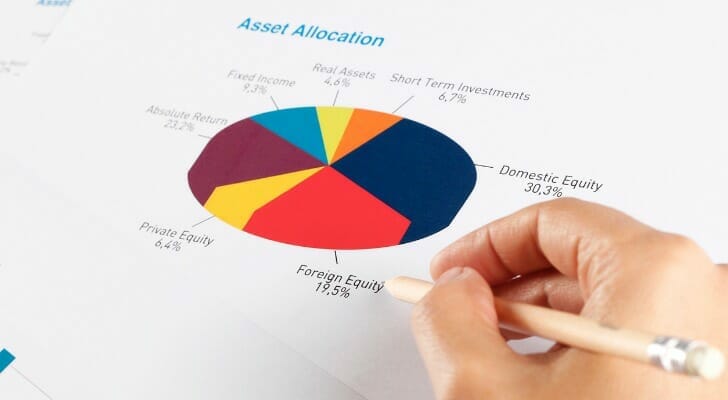Scenario analysis can help forecast investment performance, based on different factors and situations. This strategy could help with managing risk and potentially increasing returns. However, it’s important to understand how scenario analysis works before applying it to your investments.
A financial advisor can help you create a financial plan for your portfolio needs and goals.
Scenario Analysis Defined
Scenario analysis simply means estimating or predicting how your portfolio might perform under certain conditions. It’s essentially a way of saying, “what if” with your portfolio, then using those outcomes to make investment decisions.
Essentially, what you’re trying to do is gauge what your portfolio would be worth if X, Y or Z happens. Ideally, you’d make investment decisions based on scenarios that have the highest potential for a positive outcome. Meanwhile, you’d avoiding the ones that have the most potential for a negative outcome. You’re seeking returns and avoiding losses.
Scenario analysis takes risk into account when reviewing investments for your portfolio. If the risk is too great, you may not to invest despite high returns. Meanwhile, a low-risk investment may not produce adequate returns.
How Scenario Analysis Works
In simple terms, scenario analysis works by choosing a factor to evaluate your portfolio’s performance against. For example, you might decide to look at how interest rate fluctuations could affect your portfolio returns over the next 12 to 18 months. Or you might try to forecast how rising or falling commodity prices might translate to higher or lower returns.
There are several approaches you can take when putting scenario analysis to work. Some may focus on the best-case scenario, while others look at the worst-case scenario. If you’re looking for what could go wrong with an investment, then you might use a stress-testing method for scenario analysis. With stress-testing, you’re running scenarios based on the absolute worst things that could happen.
So for example, you might use a market correction as your trigger event to analyze the impacts across your portfolio. Or you might evaluate your portfolio in the context of a significant leap in interest rates or inflation rates. You can use stress testing to conduct scenario analysis on a hypothetical scale but you can also reference historical events to conduct your analysis. For instance, you might attempt to simulate how your portfolio would react in an environment similar to the one created by the 2008 financial crisis.
The easiest way to conduct a scenario analysis is by using online tools. There are numerous online simulators that allow you to plug in the details of your portfolio, then run different scenarios to see how the outcomes could play out under certain conditions.
Is Scenario Analysis Effective?

Scenario analysis can only be as good as the underlying factors you’re using to evaluate a portfolio and the information you have on hand. Say you’re trying to forecast how well a particular tech stock in your portfolio will do when a new technology is introduced. If the innovation is something that’s completely new, it can be difficult to assess how well a company and its stock will pivot in a situation like that.
Likewise, you may run into problems with getting an accurate analysis if you have incorrect or incomplete information, or your assumptions are wrong. You might be looking at a worst-case scenario for a stock because you’re banking on interest rates rising, for example. But if your assumption is wrong and rates stay the same or even decline, then your analysis may be off-the-mark and no help for making investment decisions.
Then there’s the issue of investing biases creeping in. You might be inclined, for instance, to focus on the middle ground between the best and worst-cases and bank your investment decisions on the law of averages holding out. Or you might fall into the recency bias trap and assume that what’s been happening with an investment or the market as a whole recently is a trend that’s likely to continue.
Checking your assumptions about the market and the way it’s moving or could move is an important part of scenario analysis. It’s important to make sure those assumptions are both accurate and realistic for the forecast you’re attempting to create.
Alternative Asset Allocation Strategies
Scenario analysis is just one way to decide how to allocate the assets in your portfolio. There are other approaches you can take to manage investment decision-making.
Strategic asset allocation
Strategic asset allocation is all about creating a perfect balance between risk and return for an investment portfolio over the long-term. With this type of investment strategy, you wouldn’t necessarily make adjustments to your portfolio based on market trends or movements.
Dynamic asset allocation
Dynamic asset allocation is also about finding a balance between risk and return for the long-term. The difference is that with a dynamic asset allocation, you may adjust your portfolio in the short-term to take advantage of market movements.
Tactical asset allocation
Tactical asset allocation is a more active investment strategy. You may set a baseline for your portfolio, in terms of the stock to bond mix you want to achieve. But you may trade in and out of your portfolio frequently to try to capitalize on market movements.
Bottom Line

Scenario analysis can help you project what might happen to your investment portfolio under various conditions. But like other investment strategies, scenario analysis isn’t a perfect science. Take advantage of online investment tools and research. It may increase your accuracy when forecasting returns.
Investment Tips
- Consider talking to your financial advisor about the pros and cons of using scenario analysis. SmartAsset’s free tool matches you with up to three vetted financial advisors who serve your area, and you can interview your advisor matches at no cost to decide which one is right for you. If you’re ready to find an advisor who can help you achieve your financial goals, get started now.
- When managing your portfolio, consider rebalancing regularly. Rebalancing means looking at your asset allocation and seeing if it still aligns with your investment goals. If it doesn’t, you may need to reallocate assets to bring your portfolio back in line. If you invest with a robo-advisor platform, rebalancing may be handled for you automatically, based on your investment preferences.
Photo credit: ©iStock.com/Chainarong Prasertthai, ©iStock.com/IndypendenZ, ©iStock.com/simarik
